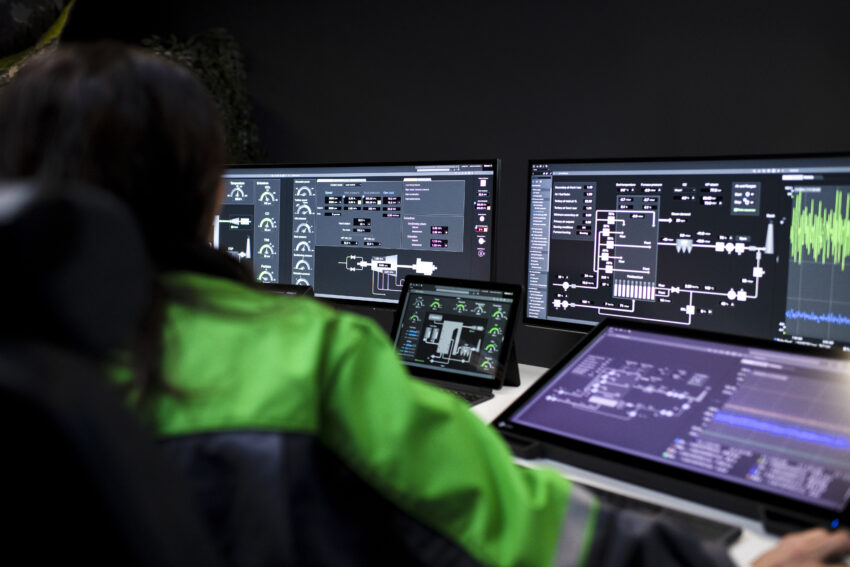The evolution of the first Distributed Control Systems (DCS) can be traced back to the 1980s and 1990s. During this period, leading DCS developers introduced their systems and over decades continued to enhance and modernize their offerings through an iterative design and development processes. This approach, although effective, essentially involves building upon the foundations laid by earlier systems.
However, over the last few years the requirements for a DCS have dramatically changed. The primary purpose of a distributed control system is to connect field devices to process controls, but digitalization initiatives have pushed DCS towards higher levels of connectivity and automation. Today, DCS are increasingly web-based systems that must be able to share information securely with back-office IT systems, provide more autonomous operations, and still offer high availability.The processing industry has gone through a significant transformation as well. With the mass exodus of long-time operators to retirement, a DCS is now required to be more automated, easy to configure, and intuitive to operate, even for less well-trained operators. DCS must also accommodate remote work and maintenance.Recognizing that the iterative process has limits and that the needs of the industry were changing, leading automation provider Valmet decided to rewrite its DNA – the company’s next-generation DCS system originally introduced to the market in 2000. The concept was to apply modern development programming languages and tools from the ground up, along with agile software development, a method of developing software that involves breaking the process down into smaller parts and frequently testing the software.
The new upgrade is further informed by the company’s extensive experience and background in providing automation systems for pulp mills, paper machines, energy production, marine and process industries worldwide. A global supplier of process technologies, services, and automation solutions with headquarters in Espoo, Finland, Valmet has over 220 years of history in the industrial sector.
The result is Valmet DNAe, a fully web-based process control system the company says was “completely redesigned from the start.” No aspect of the DCS was left untouched, but the primary drivers were enhancing cybersecurity, streamlining the user interface and configuration tools, and advanced data management, reporting, and analysis.
“Valmet DNAe comes with a new cybersecure system architecture, updated user interface, control software and hardware, and engineering and analytics tools, all of which are designed to help processors improve efficiency, productivity, sustainability, and safety of their operations,” says Petri Tiihonen, Product Manager, Platform R&D at Valmet. Tiihonen, who started as an engineer in 1995 and then moved to development in 2004, believes Valmet DNAe is the first system designed “from scratch” since the 1990s.
Some of the unique features of the next generation DCS include:
• Cybersecure by Design
At the core of the Valmet DNAe Distributed Control System is the Trusted Information Framework (TIF), which serves as the backbone for communication and data management. Built upon the TIF foundation, Valmet DNAe architecture is cybersecure by design, and it includes measures such as role-based access control, authentication, encryption, endpoint protection, and comprehensive audit trails. IT security integration helps security teams stay alert to potential threats, and the Valmet DNAe system also enables intrusion detection to be implemented. Valmet DNAe cybersecurity is externally certified according to ISO 27001 and IEC 62443 standards. The development process has been validated with Security Development Lifecycle Assurance (SDLA) certification, ensuring that security considerations are integrated into every stage of the system lifecycle.
• Improved UX
The new structured user interface provides a common user interface for controls, analytics, configuration, and maintenance. The UI is designed to provide a comprehensive view of production processes or sites based on the role of the user. Information is prioritized so operators can observe even the smallest changes easily and take immediate action, according to their role and regardless of their location. Intuitive workflows simplify operations and enable users to manage larger process areas with less effort. With proper authentication, the process can be accessed “anywhere, anytime” from mobile and desktop devices. Touch control, keyboard, and mouse are all supported.
• Improved Data Management and Analysis
The company specifically adopted storage systems or architectures built around Apache Cassandra, which is a highly scalable, distributed NoSQL database designed for handling large amounts of data across many servers without a single point of failure. The technology is well-suited for applications that require high availability, fault tolerance, and fast write/read capabilities. Improvements were also made to the Historian, a specialized software program designed to collect, store, and analyze large volumes of data generated by the DCS. The Historian allows users to monitor and analyze industrial processes over time to identify trends and make informed decisions based on historical operational data.
• A Clear Upgrade Path for Existing Customers
In alignment with Valmet’s lifetime systems compatibility promise, existing process automation customers can also benefit from the latest technology. Customers running on the DNA DCS can gradually upgrade to Valmet DNAe even though the technology is totally new. The company is committed to further developing DNAe and plans to release enhanced versions of the system in the future.
For more information about Valmet’s process automation systems, please visit www.valmet.com/dnae.

